





$3.7tn
Value created by the Fourth Industrial Revolution in 2025, equal to 3% of global GDP
74%
Of the workforce will be under 45 by 2030, with a preference for digital experiences in the workplace and home
25%
Median cost benefit for organisations that implement digital transformation
The Fourth Industrial Revolution is not just about digitalisation, but also the communication between networks and digital solutions, coupled with intelligent systems that automate and optimise tasks.
The B2B market is large and complex, ripe for disruption that will drive significant cost savings and productivity gains The pandemic had already accelerated the pace of digitalisation via remote work practices, and now a younger generation with strong preferences for digital solutions in the workplace is driving it further
The current macro climate, characterised by the increased cost of capital, high inflation levels, and supply chain disruptions, coupled with lower consumer sentiment, is pushing investors and companies alike to focus on profitability, rather than growth at all costs Technology has always been a fundamental driver of productivity throughout history, and it will continue to play that role, particularly at this critical time.
We are at a pivotal moment where technological innovation is primed to disrupt, setting the stage for all businesses and enterprises to thrive and evolve Sectors heavily reliant on analog methods will benefit the most and we expect to see promising new technologies emerge to serve these businesses as they evolve



$120tn Authors Sector Leads Ivanna Biloshytska Vice President Jeremiah Yeo Vice President Vargha Moayed Venture Partner 2 Source: McKinsey, Activant Research, McKinsey, Forrester Note: 1) Includes B2B transactions across all sectors globally, 2) B2B has 5.5% online penetration vs 17.9% for B2C








The Fourth Industrial Revolution is the culmination of human progress across 300 years of innovation at an accelerating pace
1698 – Invention of the first steam engine to raise water from mines by suction produced by condensing steam by Thomas Savory.
1760 – Start of the First Industrial Revolution, with the automation of manual labour, transforming the Western economy into a manufacturing-based economy.
1834 – Invention of the f irst battery - powered electric motor by Thomas Davenport of Vermont, initially created to power a small - scale printing press.
1870 – Start of the Second Industrial Revolution, characterised by rapid scientific advancement, improved transportation solutions and mass production, including the creation of the internal combustion engine, electricity, and telegraph networks.
1876 – Alexander Graham Bell invented the first telephone after receiving a patent for transmitting vocal or other sounds telegraphically by causing electrical undulations.
1975 – Beginning of the Third Industrial Revolution, marked by the shift from mechanical to electronic technologies, with the rise of computers and integrated circuit chips to store and process vast amounts of data and information.
1977 – Introduction of the first personal computer by John Blankenbaker , the Kenbak - 1 with 256 bytes of memory and featuring small and medium scale integrated circuits on a single circuit board.
1992 – Creation of the World Wide Web and launch of IBM's first smartphone, the Simon Personal Communicator
2010s – Fourth Industrial Revolution , defined by the rapid integration of physical assets and advanced digital technologies such as IoT, generative artificial intelligence, cloud computing, large - scale data analytics, and nanotechnology, creating smart interconnected networks and transforming traditional business models and operations.
The Fourth Industrial Revolution, combined with B2B Vertical SaaS solutions, leverages the accelerating and compounding effect of digitalisation alongside proprietary data and customisation to boost operational efficiency Digital platforms have reduced transaction and friction costs for individuals and organisations, and driven scalability, giving rise to lean and fast-adapting businesses
Traditional B 2 B sectors stand to gain significantly . In 2025, the value created by the Fourth Industrial Revolution is expected to reach $3 7tn for manufacturers and industrial suppliers alone Furthermore, an estimated 70% of new value created in the economy over the next decade will come from digitally-enabled platforms The automation of complex tasks will allow a new era of disruptive innovation

Technological automation has unlocked unprecedented scalability and growth potential for businesses
The progressive integration of technology and automation has transformed industries at an unprecedented rate, boosting productivity, with the OECD Labour Productivity Index rising by 272% and 149% since 1960 respectively for OECD countries and the US Each industrial revolution has accelerated with every technological leap, improving product quality, services, consistency, and output precision Technological progress and widespread automation is also reflected economically, as the GDP per person has increased by 57% from 2000 to 2022, assuming constant 2017 purchasing power parity (PPP)
Source: OECD, WSC Analysis (2023)
These advancements have also led to significant time and cost savings, liberating employees from mundane, manual tasks and allowing them to focus on valueadd activities. Simultaneously, globalisation, facilitated by these technologies, has allowed companies to cater to increasing international demand, scaling their operations and market reach globally, thus allowing them to expand exponentially. From 1979 to 2020, net productivity, the measure of output generated by technology after subtracting input costs, rose by 62%. The incremental gains also extend to streamlining operations and reducing costs, ultimately leading to increased profitability.
Supporting trends, such as the rise of artificial intelligence and data analytics, continue to enhance technology and automation capabilities, further revolutionising business models and processes. This transformation has become a cornerstone of the contemporary tech-driven industry, reshaping the way companies operate and compete in an increasingly digital world

Why now?
Geopolitical tensions and higher - than - expected oil prices have strained global supply chains and driven inflation . In response, companies are increasingly focusing on cost management due to their limited ability to pass inflation onto consumers, who are constrained by diminished purchasing power and increasing household debt. Additionally, rising commodity prices, and a tight labour market are compressing margins. This situation is prompting companies to seek innovative ways to boost productivity and efficiency to maintain profitability.
Most developed countries face a shrinking labour force, driven by declining participation rates, falling birth rates and an increasingly ageing population . The World Economic Forum anticipates a 23% labour market churn in the next five years Although advancements in productivity, AI, and automation are partly responsible for this shrinkage, they also represent a solution to the problem. These technologies, integral to the Fourth Industrial Revolution, promise to enhance productivity through cost savings, production flexibility, and the customisation of goods and services. However, significant changes are required to realise these benefits

Why now?
B 2 B operations and transactions typically involve many stakeholders and involve high degrees of complexity and the need for customisation . The lack of standardisation across industries and reliance on legacy systems complicate processes Developments in API-driven architecture facilitate communications across the value chain, enabling decisions and analysing data in real-time.
API architecture enables digitisation of complex legacy on premise software and IT infrastructure systems
B2B lags B2C in digitalisation as showcased by the Digital Quotient score1
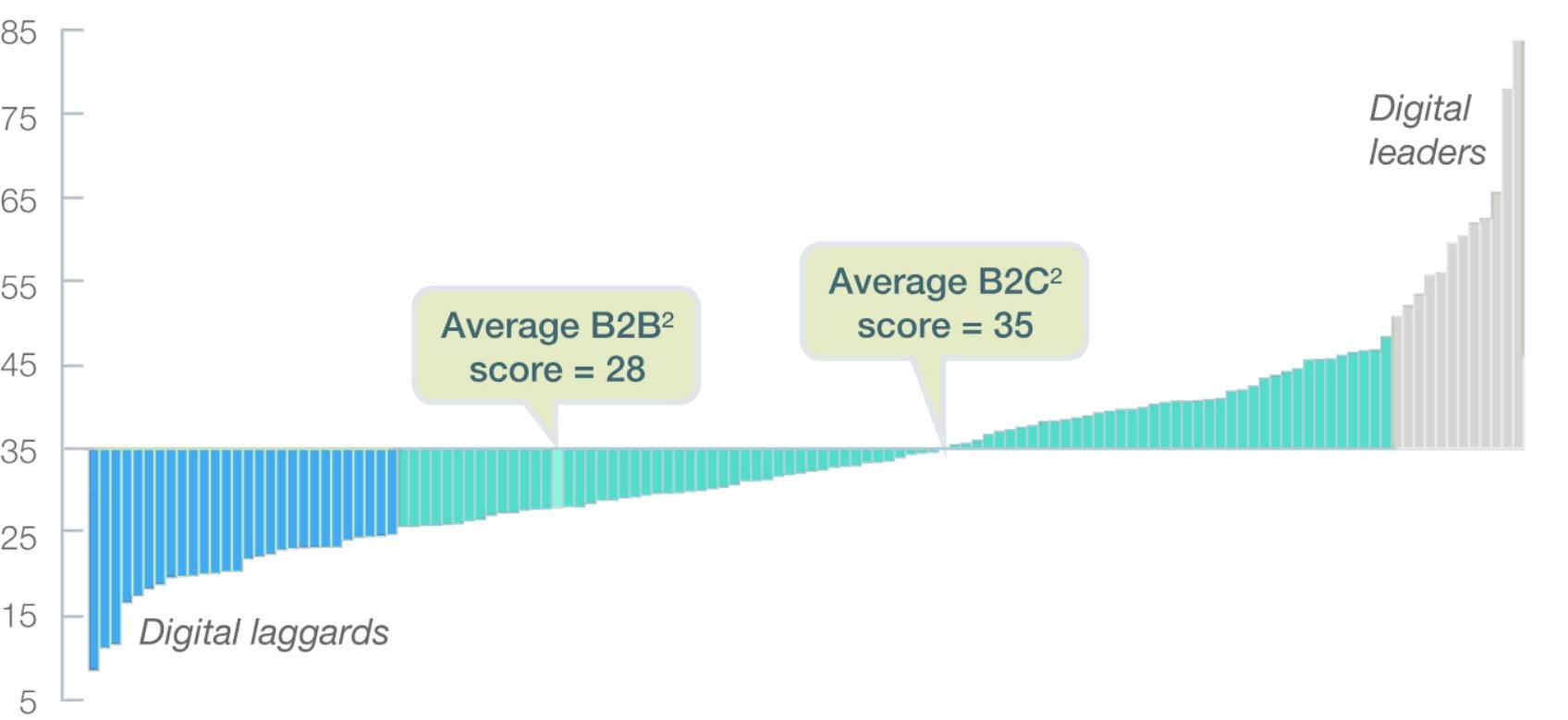
Source: McKinsey
Millennials, or 'Gen Y', are expected to form 40 % of the workforce by 2025 , closely followed by Gen Z Both generations are not just highly proficient in navigating digital platforms, but also hold elevated standards concerning their digital interactions, seeking design and user interfaces of similar standards as in their personal lives This will drive demand for digital solutions in the workplace
Projected US labour force size by age in 2030
Source: US Department of Labour
Source: The FourthIndustrial Revolution , Klaus Schwab, McKinsey, and Forbes, Notes: 1) Average across 4 equally weighted dimensions: culture, strategy, capabilities, and organisation.
2) Sample includes 47 B2B and 128 B2C companies

Why now?
Generative Artificial Intelligence (GenAI) is emerging as the key driver of the next productivity wave GenAI describes algorithms that can be used to create new content, including audio, code, images, text, simulations, and videos The broad applicability makes it a powerful tool – almost anyone can use them, with little to no formal technical training – allowing for a preternatural ability to have a conversation with a user
Previous waves of automation technology mainly affected physical work activities The current version of generative AI is in its early stages of development and adoption However, its performance is rapidly advancing due to continuous training from human inputs. It is anticipated to significantly impact knowledge work, especially critical thinking and decision-making activities McKinsey projected that by 2040, generative AI will match the proficiency of the top 25% of people in executing various office tasks.
Generative AI has been evolving at an unprecedented pace
Timeline of major large language model (LLM) developments following ChatGPT’s launch in 2022
November 2022
OpenAI’s ChatGPT , powered by GPT 3.5, becomes the first widely used textgenerating product, gaining a record 100 million users in 2 months.
December 2022
Large language models such as Google’s Med-PaLM are trained for specific use cases and domains, such as clinical knowledge.
February 2023
Amazon ’s multimodal-CoT model incorporates “chain-of-thought prompting”, in which the model explains its reasoning, and outperforms GPT - 3.5 on several benchmarks.
March 2023
OpenAI releases GPT-4, which offers significant improvements in accuracy and hallucination mitigation, claiming a 40% improvement relative to GPT-3.5.
Microsoft announces the integration of GPT-4 into its Office 365 suite, potentially enabling broad productivity increases.
Bloomberg announces a large language model trained with 50 billion parameters of financial data.
November 2023
Amazon introduces Q , a business chatbot powered by generative artificial intelligence.

We
believe the following trends will result in a growing number of opportunities within the Fourth Industrial Revolution
As customers demand higher quality and faster delivery of products and services, firms are increasingly leaning towards automation, leveraging connected machines, artificial intelligence, and streamlined processes This technological shift may result in potentially displacing 20% to 40% of current job roles globally over the next 10 years, disproportionally impacting low-tech penetration markets Against this backdrop, B2B firms acknowledge the importance of tailoring their offerings to specific geographical markets and adopting customerfocused strategies to stay ahead and fulfill the growing expectations of their clientele
375m
Workers might change job and learn new skills by 2030
55-66%
Of the global middle class will be located in AsiaPacific
8-9%
We are currently witnessing increasingly quicker product and innovation cycles This shift involves swift development, launch, and reconfiguration of products, leading to reduced investment costs but intensified competition
Simultaneously, there is an increasing reliance on third-party Software as a Service (SaaS) tools This shift places greater pressure on businesses to tailor solutions to custom needs, operate at lower cost and to anticipate shifts in demand
The combination of accelerated innovation cycles and the strategic adoption of adaptive tools defines a landscape rich with opportunities
In the B2B sector, various stakeholders are integrated into the supply chain. The evolving geopolitical landscape and inflation are steering a strategic reduction of reliance on single-source global supply chains, notably between China and Western countries This development prompts companies to increasingly embrace localised and regional supply chains, with North American firms nearshoring to Mexico from Chin This will attract enhanced investments in certain areas, encouraging broader adoption of digital technologies
Businesses that adapt to these shifting regional dynamics will gain new market opportunities and solidify their competitive stance
Of 2030 labour demand to be in jobs currently nonexistent Source:
In the coming decade, we foresee a significant trend in the post-Fourth Industrial Revolution era – an increase in collaboration between humans and machines
The transition highlights smoother incorporation of human skills into advanced technological systems, placing emphasis on values like humanism, personalisation, and creativity This deliberate focus is geared towards innovations customised to meet user needs
The European Commission’s “Industry 5 0” initiative highlights the importance of resilience, human-centered approaches, and adaptability as guiding principles These principles are crucial for startups to thrive in our ever-changing technological landscape



$627bn
Raised by Fourth Industrial Revolution startups in the last 3 years
2,071
Mega rounds in total1
$13.2bn
In seed funding in the last 3 years
551
Fourth Industrial Revolution exits in 2022
Source:
Raised year-to-date by sector startups in 2023 year-to-date (Jan-Nov)
39%
VC funding over the last 3 years relative to all transactions in the sector
407
VC-backed Fourth Industrial Revolution unicorns2
$114bn 8.0x
Increase in total capital invested from 2014 to 2022

The Fourth Industrial Revolution:
Deal volume increased significantly across all regions, but Europe (4.5x) and Southeast Asia (8.0x) saw more significant increases in deal volume compared to North America (2.8x) from 2014 to 2022
Fourth Industrial Revolution Deal Count across Seed, Series A and Series B stages by Region
Total capital invested was 8.0x higher in 2022 compared to 2014
Total Capital Invested in the Fourth Industrial Revolution across Seed, Series A and Series B by Region ($m)
Source: Pitchbook (2023)
Notes: 1) As of September 2023

There was an upward trend in terms of number of funds raised investing in Enterprise SaaS from 2010 to 2018. However, the number of funds raised has now stabilised
While the number of funds raised has stabilised since 2018, the median fund size of VCs investing in Enterprise SaaS has trended upwards – signaling that confidence amongst funds investing in Enterprise SaaS is increasing

Classification of VC firms
Industrial Technology and Logistics: Focused on either manufacturing or logistics, or both
Financial Applications: Focused solely on financial applications as a single vertical ( i.e. Fintech funds)
Real Estate Technology: Focused solely on real estate or a relevant subsector of real estate as a single vertical
Healthcare Technology Systems: Focused solely on healthcare as a single vertical
Generalist: Focused on a wide range of sectors, but make investments in companies within the Fourth Industrial Revolution space



Industrial Technology and Logistics






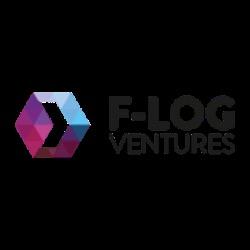







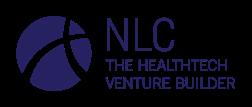




Healthcare


Financial Applications








Real Estate Technology



















Generalist















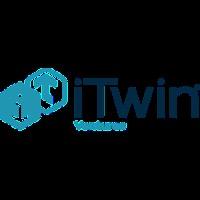




















The largest specialist funds are mostly headquartered in North America









































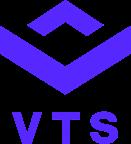














Since 2021, Fourth Industrial Revolution company valuations have corrected more relative to other tech companies across all stages after seed rounds
Most
saw declines in valuations from 2022 to

Healthcare led the way in terms of exit count, and ranked amongst the top in terms of funding
Industrial Technology, Financial Applications & Healthcare Technology Systems startups attracted the most funding as of 2023YTD1 Healthcare
to 2023YTD1

The exit environment is picking up, which is key to the long-term viability of the ecosystem
Exit activity in the Fourth Industrial Revolution space saw a 39% increase from 2020 to 2022
89%
Of exits from 2020 to 2023YTD1 were M&A transactions
49%
Of Fourth Industrial Revolution exits since 2020 came from 2022 to 2023YTD1 alone, signaling a robust exit environment
1,906
Companies in the Fourth Industrial Revolution space have exited via IPO and acquisitions between 2020 to 2023YTD1
$451bn
In total Exit Value from 2020 to 2023YTD1 disclosed through IPOs and acquisitions





AcquiredbyTeladoc Health(NYS:TDOC)for $1.1bn

The
Corporates and VC-backed companies were the most active acquirers of fourth industrial revolution companies
Top 100 acquirers (acquisition count) by acquirer type from 2020 to 2023YTD1
Top Fourth Industrial Revolution acquirers were mostly made up of Healthtech and Real Estate technology companies
Most active acquirers of Fourth Industrial Revolution companies by count from 2020 to 2023YTD1






























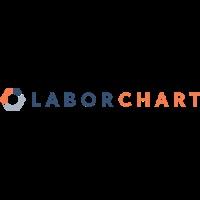



























DeveloperofHRmanagementand recruitmentplatformdesignedtoserve small and medium-sizedorganisations.

Operatorofahealthtechnologyplatform intendedtoquicklyaccessintegrateddatafrom across the care continuum.

Developerofalogisticstechnologyplatform designedtodigitisetheshipmentlifecycle.
.

Developerofapredictiveanalyticsplatform makingtheindustryreliable,productive, safe,andsecure.

Operatorofanonlinerealestatebidding platformintendedtosimplifyrealestate transactions.

Developerofapaymentgatewayplatform helpingbusinessesacceptingpaymentsthrough banktransfers,virtualaccountsandcreditcards.
$8.5bn valuation

$8.0bn valuation

$2.7bn valuation

$2.3bn valuation

$2.0bn valuation

$1.0bn valuation




is powered by several technological shifts
These technological innovations are enabling greater productivity and generating many new investment opportunities
Automation

Low-code/nocode

Immersive technologies

Data analytics and software development

Cloud and edge computing

There is a shift from Robotic Process Automation (RPA) to Intelligent Process Automation (IPA), which involves automating processes that require adaptive learning and repetitive tasks. Generative Artificial Intelligence (GenAI) can reduce the error rate and make smarter automations by creating data that can be used to train the automated processes or bots This can improve the efficiency of bots, allowing them to perform tasks more quickly and accurately IPA, with the support of GenAI, can reduce human inefficiencies and streamline tasks, saving employees up to six weeks of work per year.
Low-code platforms democratise access to advanced software technology, unlocking productivity for developers and reducing implementation time and technical debt No-code tools are 10x faster than traditional development platforms, and provide a a flatter learning curve allows organisations to build solutions 56% faster than companies that use traditional methods
Virtual Reality (VR) and Augmented Reality (AR) are gaining traction beyond gaming. Adoption is spreading across sectors, with the global market projected to reach $494m by 2030, a 29% CAGR In the B2B space, these technologies are already utilised for prototyping, augmentation, and digital twins The latter allows businesses to simulate and visualise products or processes in a virtual environment
Integrating advanced data analytics into software development processes is revolutionising how businesses approach problem-solving and decisionmaking By leveraging large volumes of data and applying analytical algorithms, companies can gain deeper insights into customer behavior, market trends, and operational inefficiencies
Large enterprises aim to migrate 60% of their digital infrastructure to cloudbased platforms by 2025, while 53% of organisations plan to use edge computing technologies in the next 12 months
We’re excited about backing the companies driving the Fourth Industrial Revolution with the following qualities:
Potential to achieve market scale
Offer additive Fourth Industrial Revolution technology
Demonstrate tangible ROI
Deliver recurring revenue and high gross margins
Capable of adapting to rapidly evolving industry standards
Offer a hedge against macro events

The purpose of this report will be to help shed light on this burgeoning ecosystem, identifying opportunities for investment as a generalist venture capital fund
Scoring: Yes = 1 / No = 0










Business Model
Is this a recurring business model?
Technology Readiness
Is the existing technology ready to scale?
Margins
Are there software-like margins?
Company Stage
Are there revenue-generating businesses raising at Series A?
Market Size
Does the potential market size at scale correspond to our criteria ($5bn+)?
Exit Environment
Have we seen large exits in this sector ($1bn+)?
Capital Efficiency
Can these businesses achieve scale without overly diluting early shareholders?
Market Readiness
Are we seeing pull from the market and supportive regulatory regimes?
Barriers to Entry
Are there barriers to entry?
Internationalisation
Is this an internationally scalable model?

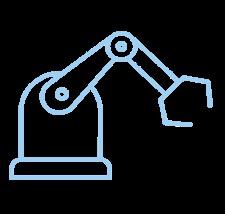
• Connected Workforce
• Digital Twin and Virtual Models

• Medical Practice Management
• Patient Engagement and Monitoring

• Supply Chain Optimisation
• Warehousing Technologies

• Intelligent Process Automation
• Sales and Marketing
• [Task-specific tools] Intelligent Document Processing

• CFO Stack
• Banking and Fintech as a Service
• B2B Insurtech Tools

• Data and Opportunity Discovery
• Agent Tools and Facility Management
• Advanced Analytics and IoT in Manufacturing
• Maintenance and Quality Management
• Coding and Medical Billing
• Medical Staff Management
• Inventory Management and Demand Forecasting
• Fleet Management and Delivery Services
• [Task-specific tools] Conversational Artificial Intelligence Solutions
• Talent management
• B2B Payments
• Enabling infrastructure
• Lending for small and mid-size businesses
• Transactional Tools
• Investing and Leasing
• Design, Engineering and Construction

We focused on the key sectors undergoing rapid structural change

Enterprise SaaS
In a data-intensive world, enterprise SaaS is essential for companies to simplify operations and boost efficiency

Intelligent Process Automation
Industrial production, manufacturing and workplace processes are being revolutionised through software productivity tools

Precision Technology Tools
Quality assurance, production management and predictive analysis are improved orders of magnitudes by technology

Process Orchestration
Digitalisation drives a step change in productivity. Orchestration adds to this by enabling communication across digital solutions
And identified the following subsectors as key beneficiaries





Industrial Technology aims to revolutionise industrial operations, promising efficiency gains, cost reduction and deliver more sustainable production
29%
Of EU's non-financial business economy’s value added by manufacturing sector in 2020
66%
Of manufacturing firms in the EU have adopted at least one digital technology
$20bn
Expected manufacturing SaaS market size by 2026
50%
Shortage of manufacturing jobs by 2030 in the US
Manufacturing operations have traditionally relied on labour-intensive processes, resulting in systemic inefficiencies and reduced productivity However, driven by evolving industry needs and technological advancements, the adoption of industrial technologies promises transformative efficiencies in the manufacturing sector
The reasons driving the adoption of industrial automation are shifting, now prioritising resilience, flexibility, and sustainability alongside traditional cost and productivity concerns This shift is fueled by disruptive technologies and pressing global trends, including reshoring, a growing shortage of skilled labour, and the rise of ESG initiatives.
WSC

To mitigate supply chain and geopolitical risk, manufacturers are adopting reshoring or nearshoring strategies to bring operations closer to their national borders North American companies have started nearshoring from China to Mexico, whilst European firms are increasingly looking to Central and Eastern Europe

Realising the importance of controlling production, governments such as the US are incentivising corporate relocations IRA and the CHIPs Act played a pivotal role in shaping these measures, resulting in a boom in the construction of manufacturing facilities. These shifts to regions with aging workforces and skilled labour shortages may strain labour markets, driving the adoption of SaaS solutions to optimise workforce and productivity
Governments support industrial policies to create new costs or deliver financial incentives in the manufacturing sector
The US government offered subsidies and loans, erected tariffs, and provided extensive fiscal incentives The EU responded with its Green Deal, its New European Innovation Agenda, and updated EU Industrial Strategy, to temporarily set aside state-aid rules that limited subsidies to companies in member countries
The manufacturing industry faces persistent supply chain challenges, including labour shortages, sourcing bottlenecks, global logistics delays, cost pressures, and cyberattacks. These issues have dampened business confidence and lowered the Manufacturing Outlook Index to 55, a 4 2-point decline since the first quarter of 2022
The rise of lighthouses manufacturing sites integrating Fourth Industrial Revolution technologies such as connectivity, flexible automation, and intelligence at scale, including digital performance management and quality analytics, are driven by modern workplace practices such as hybrid work These technologies can successfully address financial hurdles, technology barriers, and organisational issues Currently, there are 18,600 lighthouses worldwide.

Score: 10
With a shrinking labour force in manufacturing, companies have to optimise their workforce productivity. Connected workforce solutions can enhance operational efficiency by streamlining tasks' creation, assignment, management, and supervision, improving communication, and sharing best practices.
Tailwinds Challenges
+ Shrinking labour force and rising wages prompt companies to optimise their workforce
+ Improved factory safety measures
+ Facilitated data-driven decision-making
+ Cybersecurity safety
+ Difficult integration with other software
WSC VC Investability Index: 7
+ Large-scale IoT infrastructure to manage, along with the complexity of interconnected systems
+ Time required to onboard teams into new software
+ Potential disruptions, including network outrages, device failures or power supply issues
Score: 8
Creating digital twins and virtual models can optimise physical assets and industrial operations by involving real-time digital replicas of physical assets or processes to monitor and optimise performance.
Tailwinds Challenges
+ Market size projected to reach $110.1bn by 2028 (61.3% CAGR 23-28)
+ Applications in industrial and data-driven sectors
+ Simulations can help identify potential inefficiencies and allow for changes before materialisation of impact in the physical world
+ Market entirely dominated by NVIDIA with its omniverse platform
+ Low spending on digital twin software compared to general analytics
+ Need for high-quality data infrastructure with reliable data from both testing and live environments
Score: 8
In today’s data-driven manufacturing landscape, integrating advanced analytics and IoT is essential to optimise processes and enhance productivity. The latest innovation features edge and IoT security platforms, real-time sensors, next-gen networks, connected smart homes, and 5G technology.
Tailwinds Challenges
+ IoT market size projected to reach $3.4tn by 2030 (26.1% CAGR 23-30)
+ Significant growth of IoT in Asia-Pacific due to IT infrastructure development and government initiatives
+ Increased adoption by small and medium-sized businesses
+ Additional measures are required to ensure cybersecurity safety
+ Large-scale IoT infrastructure to manage, along with the complexity of interconnected systems
+ Potential disruptions, including network outrages, device failures, or power supply issues

Score: 6
Companies seek efficiency gains through automated maintenance. Cutting-edge technologies allow for maintaining high-quality standards by analysing products and processes, identifying defects, and suggesting improvements.
+ Market size projected to grow to $49.3bn by 2032 (11.9% CAGR 22-32)
+ Increased demand for better maintenance monitoring to increase product quality and reduce downtime
+ Adoption challenge amongst employees used to traditional maintenance








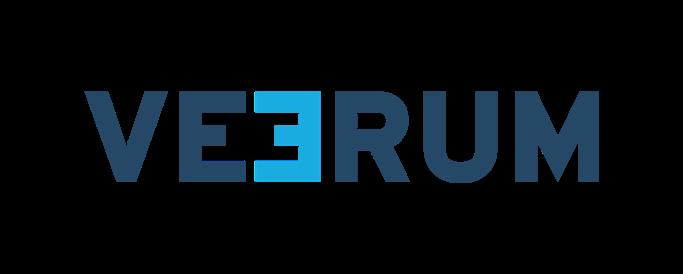





















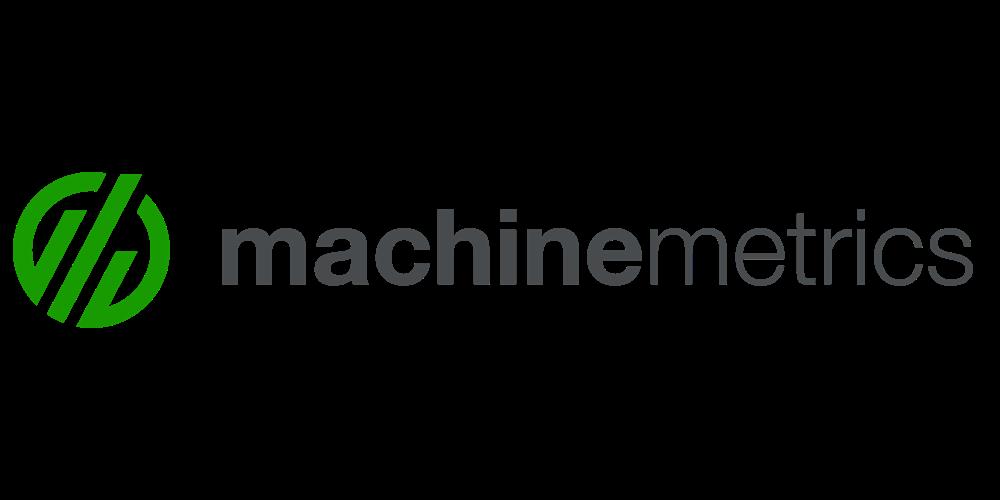














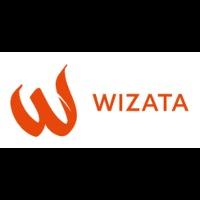









Developerofapredictiveanalyticsplatformto convertdirectlyintotheworkflowtomakethe industryreliable,productive,safe,andsecure.

DeveloperofanAI-poweredmachinehealth platformtoeliminatedowntime,optimise maintenance and maximiseproductivity.
$323m raised to date

$294m raised to date

Developerofacloud-baseddigital manufacturingplatformdesignedtomake industrial automation easier and more accessible.

Developerofaplatformdesignedtomanage agreementswithsuppliersandcustomersto deliveractionableinsightsforsmarterplanning.

Developerofanindoorspatialintelligence technologytodigitise industrial facilities.
$153m raised to date

$119m raised to date

$109m raised to date




Healthcare solutions are expected to continue disrupting the market by using data to support patient care, reduce physician burnout and administrative burden
$1.1tn
Enterprise value of opportunity for investors in value-based care by 2027
60%
Total healthcare spending percentage going towards improving health and wellbeing by 2040
9.7%
Estimated OECD countries’ spending on health as a percentage of GDP
$13.3bn
In yearly cost savings in the U.S. by reducing the administrative burden of healthcare professionals
The shift towards platform-enabled ecosystems and value-based care signifies a transformative paradigm in healthcare innovation Platform-enabled ecosystems leverage digital platforms to connect patients, healthcare providers, and stakeholders, fostering data sharing and collaboration This promotes a more patient-centric approach, with individuals accessing their health information and personalised care recommendations At the same time, value-based care focuses on delivering high-quality care measured by patient outcomes rather than the volume of services provided
Innovations in healthcare are poised to enhance service quality by aligning stakeholders' interests, driving improved health outcomes, and curbing healthcare costs

The move to value-based care and shifting government regulations drive digital health startups to create innovative solutions centered on better patient outcomes and cost-effective, data-driven care.
Source: Pitchbook (2023)
The transition to value-based care, with value defined as health outcomes per unit of costs, offers a fertile ground for healthtech innovation. Healthtech solutions have streamlined healthcare processes, leveraged data analytics for better decision-making, and enhanced patient engagement, aligning with valuebased care models' fundamental objectives: improved patient outcomes and cost reduction By utilising advanced technologies, healthtech companies can transform the healthcare industry toward a more patient-centric, efficient, and costeffective approach to care delivery.
Source: Deloitte, SVB, WSC Analysis (2023)
Evolving healthcare regulations worldwide are spearheading the integration of technological tools in healthcare, which enhances efficiency and transparency across the value chain This shift is also driven by the need to cater to the healthcare demands of an aging population and Generation Z Better government funding and subsidies are lowering the barrier of entry for startups and small businesses to make meaningful contributions to democratising healthcare access and affordability.
Notes: 1) As of September 2023 2) Pitchbook deal count filters: Healthcare (Digital Health, Healthtech, TMT, AI&ML, SaaS, Big Data)

Score: 9
Medical practice management leverages technology to streamline back office administrative and operational tasks, improving efficiency, care, and the service quality of medical practices and the procurement and logistics of medical equipment.
Tailwinds Challenges
+ Shifting healthcare models from fee-for-service to value-based care incentivises practices to focus on quality, cost-effective care, and better patient outcomes.
+ Navigating complex and evolving healthcare regulations can be time-consuming and may lead to compliance issues.
+ Fragmented customer base (e.g. SMB healthcare providers).
Score: 7
The aging population's rising healthcare needs drive a growing demand for patient monitoring and engagement software, which enables remote health tracking and early intervention. These technologies are crucial for patient engagement, medication adherence, and health insights.
Tailwinds Challenges
+ Smaller profit margins per patient force healthcare providers to invest in lean improvement approaches to retain patient flow.
+ Payers and providers are investing in engaging earlier and finding new ways to deepen the relationship with patients.
+ Insufficient government funding and subsidies decrease the capacity to offer population-wide patient success platforms.
+ Integrating different systems and platforms to ensure seamless workflow and data exchange can be complex.
Score: 7
Coding translates medical information into codes for insurance and records, while medical billing submits these codes for reimbursement and financial management. These processes contribute to developing medical innovation technologies by ensuring efficient data management and enabling advanced analytics for better patient care, resource allocation, and healthcare research.
Tailwinds Challenges
+ Hospital reimbursement growth continues to trail cost increases, prompting the shift to digital solutions.
+ Better integration with digital insurtech players streamlines the coding process.
+ Evolving healthcare delivery models, such as telemedicine, may require coding and billing software to iterate their business model constantly.
+ Misalignment of incentives with insurance players charging on a “cost-plus” basis

Score: 6
Medical staff management is the administrative process that encompasses the recruitment, credentialing, scheduling, and coordination of healthcare professionals within a healthcare institution, such as hospitals or clinics. This management function is essential for delivering safe and effective patient care while navigating the complexities of staffing shortages in healthcare.
Tailwinds Challenges
+ Outsourcing credentialing and privileging tasks to specialised agencies can expedite the onboarding process.
+ Healthcare professionals may experience burnout due to heavy workloads, affecting retention and recruitment efforts.











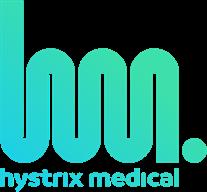






































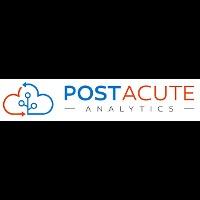





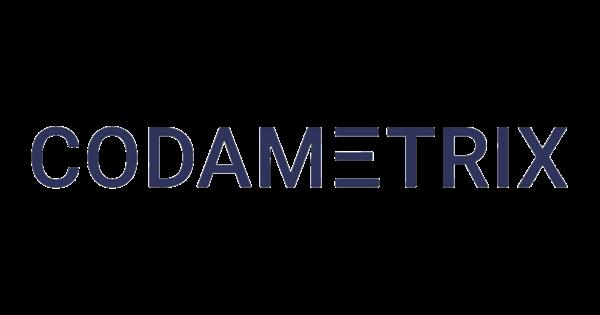









Healthtechnologyplatformintendedtoquickly accessintegrateddataacrossthecare continuum.

Platformhelpingpatientsbookappointments onlineandofferingpractitionerssoftwareto managetheirpatientsandconsultations.

Digitalemploymentplatformfacilitatingthe nurserecruitmentprocessforhealthcare facilities.

Automationtechnologysoftwareleveraging dataandeliminatingmanualworktodrive efficiencyforhealthcareinstitutions.

Applicationstrengtheningphysician-patient relationshipbyhelpingpracticessucceedin deliveringpersonalisedcaretopatients.
$678m raised to date

$461m raised to date
$461m raised to date

$205m raised to date

$109m raised to date




Logistics and Warehousing aim to enhance supply chain efficiency, mitigate disruptions and improve visibility for better operations
$25tn
Value of world merchandise trade in 2022
540m sqft
Square footage of owned and leased Amazon fulfillment centers
$6bn
Expected market size for logistics SaaS in 2030, a +10% CAGR 2022-30
16
Logistics SaaS unicorns to date
Recent geopolitical events, such as the Russia-Ukraine conflict and COVID-19, have exposed inherent weaknesses in supply chains Companies are actively seeking solutions to help them manage disruptions, diversify sourcing, and enhance visibility and tracking.
There is an opportunity to invest in Logistics and Warehousing, as these sectors are lagging in digitalisation. Logistics and Warehousing represent highly fragmented markets, with companies often relying on labour-intensive, archaic methods These characteristics suggest the potential for breakthroughs and innovative solutions that could significantly add value to the sector.
WSC Score Technology Notes

Under recent geopolitical friction, companies are seeking to build robust and resilient supply-chains to respond quickly to operational disruptions through flexible contingency planning and forecasting

The outbreak of the Russia-Ukraine conflict and the upcoming US national elections in 2024 have led companies worldwide to reassess their supply chains, and governments have implemented measures to secure essential resources. In 2024, industrial and trade policies will remain a central concern, with ongoing tariff assessments, such as the US Section 301 duties on imports from mainland China, negotiations regarding steel and aluminum between the EU and the US, and an EU inquiry into mainland China's electric vehicle industry.
Resource protectionism is expected to persist in certain countries due to escalating prices and government security strategies.
Recruiting and retaining skilled workers is one of the leading challenges for many supply chain operators. Technology is a key lever to automate routine tasks, easing the shortage by reducing reliance on manual labour while freeing up capacity for higher-value add activities.
Supply chain disruptions amidst COVID-19 and the Russia-Ukraine war have shown a need for supply chain resiliency Apart from near-shoring, which has limitations, technology is expected to play a key role in fortifying the resilience and efficiency of global supply chains by driving connectivity and visibility, amongst other factors

Score: 8
Enterprise supply chain management increasingly adopts cloud-based solutions to improve visibility and resilience. This evolution prioritises comprehensive oversight and adaptive capabilities, beyond just cost-cutting. Startups are integrating advanced technologies such as IoT, artificial intelligence, and mobile applications, whilst addressing broader ESG concerns.
Tailwinds Challenges
+ Increased demand for solutions to better manage disruptions, diversify sourcing, and improve visibility and tracking
+ Need to overcome shortages in the supply chain labour force
+ Cyber-attacks and DoS surge
+ Material access in turmoil
+ Geopolitical tensions with nations turning inward and exploring domestic self-sufficiency
Score: 7
The increasing importance of e-commerce and supply chain optimisation are expected to drive growth in smart warehousing. Big Data and analytics, artificial intelligence and IoT allow for optimising processes within the warehouse, decreasing costs and time by automating tasks and minimising labour.
Tailwinds Challenges
+ Global Smart Warehousing market size expected to reach $29bn by 2028 (11.2% CAGR 22-28)
+ Increasing digitalisation and automation of warehouses
+ Need for a higher degree of connectivity among workers
+ Resistance to changes in the processes amongst the workforce
+ Lower penetration of smart warehousing across small-scale businesses
Score: 6
Supply chains are looking to benefit from faster and more accurate inventory management and shipment verification in light of recent geopolitical turmoil.
Tailwinds Challenges
+ Inventory Management Software market size expected to reach $4.9tn by 2027 (9.9% CAGR 2127)
+ More detailed and timelier information about consumers’ demand
+ Existing established market solutions offered by legacy ERP companies
WSC VC Investability Index: 7
+ Lower adoption amongst small and medium-sized businesses

Score: 6
Technological advances in autonomous delivery are on their way to disrupt the highly labourintensive transportation industry. Artificial intelligence and real-time data inflows will enable clients to improve their assets’ productivity.
Tailwinds Challenges
+ Underutilisation of assets (25% of US trucking capacity is unused)
+ 5G expansion to increase the speed at which information travels, reducing latency and increasing productivity
+ Slower adoption among small fleet owners
WSC VC Investability Index: 7
+ Recent rise in operational and fuel costs with recent geopolitical tensions and microchip shortage

Supply Chain Optimisation













Warehousing Technologies










Inventory Management and Demand Forecasting












Fleet Management and Delivery



























Developerofafreightforwardingplatform designedtoprovidevisibilityandcontrolover theentiresupplychain.

Developerofalogisticstechnologyplatform designedtodigitisetheshipmentlifecycle.

Developerofadigitalfreightforwarderand shippingmanagementplatformdesignedto managelogistics.

Developerofanomnichannellogisticsplatform tocreateanopenlogisticsnetworkthat optimisestheglobaldeliveryofgoods.

Supplychainvisibilityplatformthatprovides shippersinstantaccesstopredictiveinformation of all deliveries.
$2.5bn raised to date

$983m raised to date

$617m raised to date

$263m raised to date

$90m raised to date




B2B Future of Work comprises a set of tools that connect and streamline operations within and across different business units of an organisation
$2.5tn
Spend on digital transformation technologies and services by 2024
84%
Of small businesses still rely on some sort of manual process
$20bn
Market size of workflow automation industry
52%
Of business leaders believe that 10-30% of their daily tasks can be automated
Back-office automation has evolved significantly over the years and has now extended to the front office, addressing critical operational tasks This trend benefits both large multinational corporations aiming to increase their profit margins and SMBs seeking substantial productivity improvements.
We expect notable advancements in the streamlining and automating processes across Talent Management, Sales and Marketing, and others. These advancements will be driven by smart tools that drastically reduce reliance on manual labour, such as Conversational Artificial Intelligence and Intelligent Document Processing.

Capital invested in B2B Future of work software increased 15x from 2015 to 2022, indicating a strong appetite for this sector
Source: Pitchbook (2023)
By 2030, millennials will constitute 40% of the workforce Unlike previous generations, they are averse to engaging in manual, repetitive tasks and hold high expectations for their digital workplace experiences to mirror their seamless consumer interactions. This will drive the adoption of B2B Future of work applications to increase efficiency
Rapid advancement of a rtificial intelligence and machine learning 2023 is the breakout year for generative artificial intelligence. AI investment could reach U$200bn globally by 2025 This rapid advancement and investment in AIrelated tech accelerate the development of automation tools by enhancing data processing, improving predictive analytics, reducing errors, etc.
Source:
Increasing adoption of digital transformation and automation
Organisations are increasingly undergoing digital transformation to stay competitive 91% of businesses are engaged in some form of digital initiative. By 2025, 75% of business executives will be able to adapt to new markets and industries using digital platforms. As such, this provides a good foundation for automation software as digital transformation pushes companies to collect, store, and leverage data
In fact, 70% of respondents in McKinsey Global Survey say their organisations are at least piloting automation technologies in one or more business units or functions, up from 66% in 2020 and 57% in 2018

Score: 9
Intelligent Process Automation tools are software that automates business processes by enabling the orchestration of diverse sets of actors (human, systems, bots) involved in executing simple and more complex processes.
+ Solutions to reduce corporate cost structure with a lasting impact
+ Complex to implement due to lack of skilled manpower and technical expertise required for a successful deployment
+ Time-consuming and requires significant initial capital investment, which can be a barrier for some organisations
+ Potential resistance from employees due to concerns about job displacement
Score: 7
Companies are operating in a data-rich world. There has been a rise of data-driven and technology-focused approaches with the introduction of tools to automate and personalise communication, track sales, execute and manage different marketing tools, etc.
+ Improved user engagement and retention
+ Increase in topline growth by leveraging the sales and marketing datasets, among the largest and most liquid in a company
+ Complexity of handling various software vendors and ensuring smooth integrations and upgrades while seeing rapid changes in technology
+ Overwhelming quantity of available technologies with redundancies complexify the selection process
Score: 7
These platforms use machine learning and natural language processing to enhance business efficiency by automating data extraction from complex documents with semi-structured or unstructured formats
+ Key driver in digital transformation efforts across various industries
+ Good ability to convert unstructured data (e.g. emails, text messages, photos, PDFs, others) into meaningful insights crucial for informed business decisions
+ Enable companies to handle the growing volume of data and document processing requirements in a scalable way
+ Managing data access and rights to prevent data misuse
+ Handling various types of documents, particularly those with complex formats and quality, posing a significant challenge

Score: 5
Conversational Artificial Intelligence solutions are poised to be pivotal in enhancing automation, flexibility, and remote work capabilities while improving customer service and workplace communication.
Tailwinds Challenges
+ Market set to grow at a CAGR of 22.6% from 2023 to 2028, reaching nearly $30bn by 2028
+ Development of chatbots with advanced emotional intelligence, enabling more nuanced and empathetic interactions
+ Growing trend of integration with other technologies
+ Constant evolution of human language requires continually adjusting to new trends and speech patterns
+ Significant challenges in effectively engaging customers and at risk of being commoditised with generative artificial intelligence
+ Potential latency, breakdowns, and high costs associated with implementing and maintaining API solutions
Score: 4
There is a shift toward all-in-one platforms, integrating various workforce-related functions into a single streamlined system for enhanced efficiency and user experience. Emerging solutions combine everything from recruitment tools, storing employees’ files to performance tracking.
Tailwinds
+ Improve employee and employer experience and engagement from onboarding to ongoing career development and performance monitoring
+ Allow for more informed decision-making, trend analysis, and predictive insights related to workforce management
+ Accentuate shift from human resources to talent management, supporting employees’ professional growth
Challenges
+ Concerns over security and privacy of data
+ Artificial Intelligence faces a challenge in replacing human tasks, particularly in conflict resolution





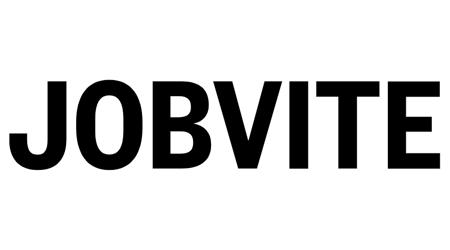










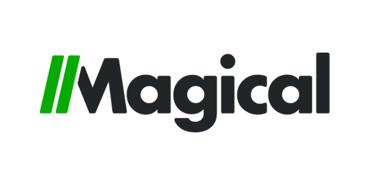

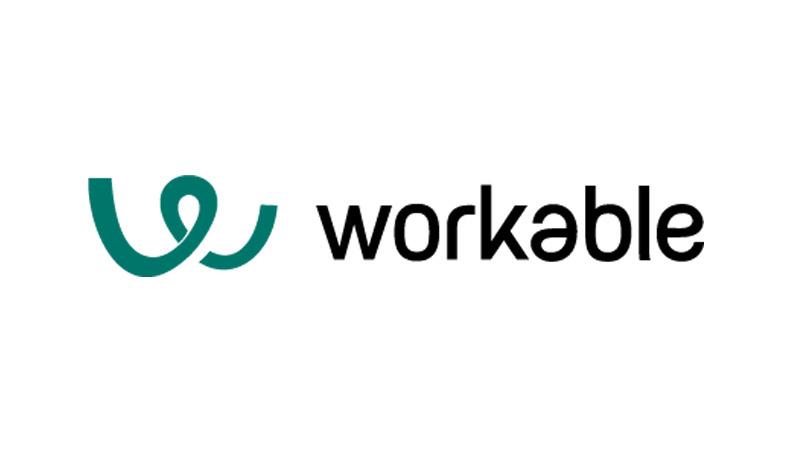










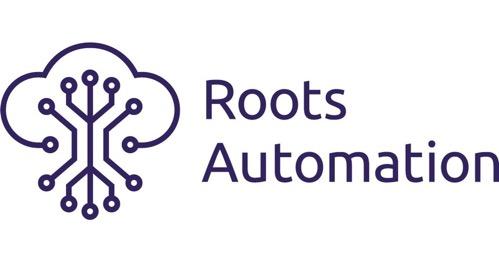

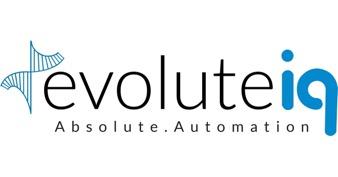












































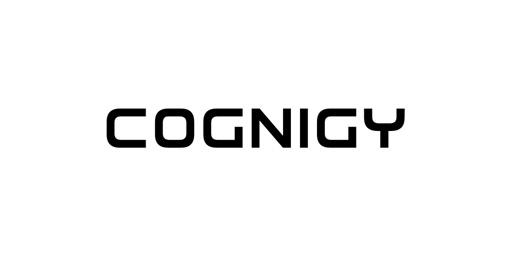







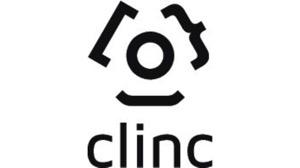

















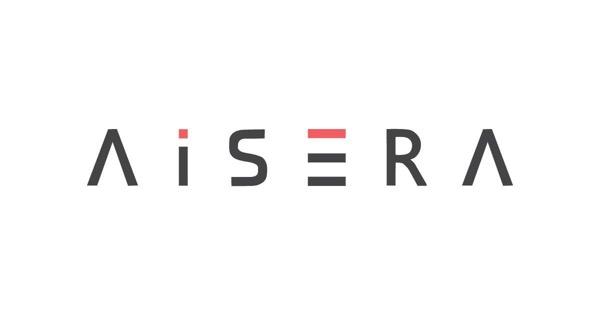


Developerofanartificialintelligence-based researchanddeploymentplatform.
Developerofmarketingautomationplatform offeringmarketingpitches,webdevelopment, etc.

Developerofhumanresourcesmanagement andrecruitmentplatformdesignedtoserve small and medium organisations.

DeveloperofAIbasedenterprisesoftware designedtoreducemonotonousmanualentry and automate office work.

Developerofprocessorchestrationsoftwarethat offersdetailedvisibilityintobusinessoperations acrossdistributedsystems.
$13bn raised to date

$760m raised to date

$725m raised to date

$299m raised to date

$127m raised to date




B2B Fintech solutions aim to digitise financial operations and transactions that occur between businesses.
$725bn
Revenue from B2B Fintech by 2030, up 9x from 2021
80%
Of B2B transactions expected to be online by 2025
70%
Of jobs and GDP composed of SMBs, who will who benefit the most from B2B Fintech
68
B2B Fintech unicorns to date
Historically, B2B financial services and operations have been very manual, leading to inefficiencies and lower productivity Advancements in technology and user preferences have made adopting B2B Fintech much more feasible today.
The next wave of Fintech innovation is expected to enable business operations and transactions, targeting the CFO stack, B2B payments, Banking and Fintech as a Service, SMB lending, insurance and enabling infrastructure.

Governments globally are making a regulatory push to encourage digital invoicing. Various members of the EU have committed to shifting to mandatory e-invoicing as part of the EU Commission’s initiative, VAT in the Digital Age (ViDA) Many governments also implemented open finance regulations, albeit to varying degrees, creating access to data that enables various forms of Fintech innovation. This includes PSD2 in the EU and Consumer Data Right in Australia Moreover, companies are pressuring their governments to reform the traditional financial sector Canadian Fintech leaders signed an open letter in November 2023 calling on the government to move forward with open banking.
Millennials and Gen Zs use mobile banking 5x more than their parents They are digital natives; their familiarity and comfort with technology will drive businesses to adopt more advanced fintech solutions to increase efficiency and transparency, supporting a digitalised work experience
RTP technology has increasingly become the focal point for financial institutions, payment providers, and businesses. RTP catalyses B2B fintech by significantly reducing time and cost for payment transactions, improving cash management, and providing a wealth of data in real-time Source:

Score: 8
Teams need to allocate resources to strategic initiatives. Hence there is need for tools to streamline manual finance workflows such as accounting, AP/AR, spend management and payroll.
Tailwinds Challenges
+ Increase in hybrid work arrangements calls for software to enable automation and collaboration
+ Shift in CFO’s focus from being an accountant to strategic leader
+ Finance stacks are often complicated and intermingled
+ Adoption and implementation can be long drawn
Score: 8
Banks and non-banks need access to digital banking capabilities and services in a digital-first world. Platforms that provide this digital experience are beneficiaries of digitalisation.
Tailwinds Challenges
+ Growing demand for digital user experience design and user interface design (UI/UX) driven by the increasing share of the millennial workforce
+ Push for cost optimisation, which drives traditional institutions towards digital offerings
+ Highly regulated sector
+ Risk of being disintermediated as a middleman
Score: 8
The insurance industry is served by large and traditional incumbents. The main innovation in this space is technology tools to enhance and improve the efficiency of incumbents.
Tailwinds Challenges
+ Insurers increasingly prioritising improvements in operational efficiency and customer experience through digital solutions
+ Consolidated customer base (insurers) reduces bargaining power
+ Industry is mature and can be reliant on legacy systems

Score: 7
Paper and offline remain the standard mode of payment even in the most developed economies. There is huge potential for digital B2B payment solutions across checkout, cross-border, real-time, billing, BNPL and other payments infrastructures.
Tailwinds Challenges
+ B2B payment market is expected to reach $200tn by 2028, which is 5x the B2C market
+ B2B digital payments significantly lag in adoption vs B2C; only 30% of global B2B expenditures are processed electronically compared to 60% for B2C
+ B2B payments are complex and hence more difficult to digitalise
+ Adoption of digital payments can be long drawn
Score: 6
Both finance and non-finance companies are increasingly looking to provide or digitalise financial services. Infrastructure providers are key enablers, supporting on compliance and fraud, open banking and API integrations, amongst others.
Tailwinds Challenges
+ Growing demand to provide digitalised financial services
+ Strong regulatory support for digital financial transactions and open access to financial data
+ Highly complex operating environment
+ Heavily subjected to changes in regulation and policy
Score: 5
Small and mid-size enterprises have traditionally lacked access to bank loans. With advancements in technology and underwriting abilities, tech-enabled lenders are now providing alternative sources of financing.
Tailwinds Challenges
+ Advancements in technology such as big data and AI/ML that enable smarter underwriting
+ White space untapped by traditional banks
+ Rising cost of capital makes it more difficult to profit on loans
+ Can be capital intensive to scale

















































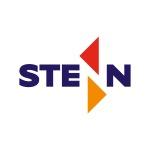


































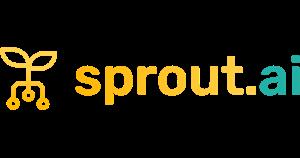
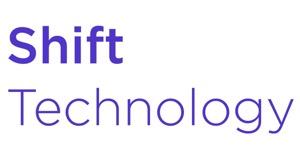



































Cloudnativecorebankingplatformdesignedto identifybankingproblems.

Onlinepaymentsplatformdesignedtoexpedite B2Binvoicingandpayments.
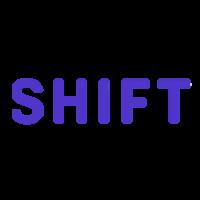
Cloud-basedsecurityplatformdesignedto improvetheinsuranceclaimsprocess.

Cloud-basedaccountingsoftwaredesignedto makeonlineinvoicingeasyandsecure.

Financemanagementplatformtomake businessbankingeasy,fastandtransparent.
$636m raised to date

$348m raised to date

$315m raised to date

$314m raised to date

$300m raised to date




Proptech has the potential to disrupt one of the world’s oldest and largest industries to tackle critical issues related to housing affordability
$228tn
Value of the global real estate industry, the largest of any asset class
$19.5bn
Value of the global proptech market
10-20%
Commercial real estate will be repurposed
96,000
New affordable homes need to be built globally every day to tackle the housing crisis by 2030
Real estate technology companies will navigate new challenges in today’s difficult macroeconomic climate, housing crisis, and shifting demand patterns The real estate technology sector currently lags behind many other asset classes in digitalisation The sector is ripe for disruptive innovation with many intermediaries involved and a noticeable lack of transaction transparency. Successful proptech startups will find solutions in scaling their operations and achieving vertical integration to deliver a consistent user experience, optimise data utilisation, and streamline transaction processes, all while embracing sustainability as an opportunity for growth.

The evolving dynamics of supply and demand in the real estate sector present stakeholders with the opportunity to leverage advanced technological tools for enhancing the efficiency and effectiveness of real estate construction, sales, resales, and property management processes
Indicating high occupancy and strong rent growth for residential and industrial sectors

Migration towards affordable housing is on the rise, and there's a significant demand for innovative policies and technologies to meet this demand efficiently
However, increasing interest rates offset the positive affordability impacts of any potential decrease in home prices
In addition, affordability pressures are forcing many potential purchasers to consider renting homes instead of buying, further impacting a constrained supply in the rental market and leading to increasing rents, thereby worsening the affordability crisis
Housing construction has slowed down since 2022 due to labour shortages and the high cost of borrowing Alongside the persistent migration trend toward developed countries, there is a supply backlog for construction and property transactions
Real estate professionals are increasingly turning to innovative technologies to accelerate the speed of construction while also facilitating the simplification of intricate real estate deals, thus ensuring that the industry remains agile and responsive in meeting the ever-growing demand

Score: 8
The rapid adoption of artificial intelligence and big data enables companies and individuals to analyse vast data quickly. This technology empowers modern real estate developers with tools for immediate market analysis, democratising the industry previously dominated by seasoned investors.
Tailwinds Challenges
+ Access to new and unconventional data sources such as resident surveys and mobile phone signal patterns helps leverage more advanced insights
+ Predictive-model outputs can forecast future risks and opportunities in a hyperlocal area
+ Building and accessing advanced analytics into a portfolio is time-consuming and costly
+ Progress in AI is frequently exponential, with late adopters possibly failing to integrate it into their business model
Score: 8
Technological platforms such as property management tools, CRMs, 3D virtual tours, and smart buildings provide agents and property managers with innovative software to streamline operations, enhance customer experiences, and improve overall efficiency.
Tailwinds Challenges
+ Data-driven decision-making allows agents to personalise the customer journey
+ Scalability and flexibility of digital tools streamline the adaptation process in an ever-changing industry
+ Implementing advanced technological tools often requires a significant upfront investment
Score: 7
Digital transactional solutions streamline the transaction process by centralising critical information, enhancing collaboration, ensuring compliance, and enabling accurate data management, which increases transparency in the real estate transaction lifecycle.
Tailwinds Challenges
+ Embedded compliance features help adhere to legal requirements and reduce the risk of noncompliance.
+ Remote work pushes transactions to be completed online within a shorter time frame
+ Real estate professionals prefer interoperability and a one-stop-shop platform for their transaction needs while avoiding long onboarding and training periods

Score: 6
Changing demographic needs have led to the urbanisation of house ownership while short-term and long-term rental platforms have fundamentally transformed cities. Investment and leasing tools allow owners to repurpose their real estate assets.
Tailwinds Challenges
+ Population growth creates increased demand for housing, commercial properties, and infrastructure development
+ Sustainability and environmental consciousness is driving demand for energy-efficient, eco-friendly properties, promoting green building practices and technologies
+ Interest rates and a volatile macroeconomic environment have decreased customer appetite for real estate.
Score: 6
Advances in construction technology tools is helping tackle the affordable housing crisis and changing consumer needs with innovations like augmented reality property design, modular building, and robotics, which decrease construction costs and time by automating tasks and minimising labour. Younger generations of homebuyers reflect the demand for homes that suit individual lifestyle needs.
Tailwinds Challenges
+ Opportunities are ripe for consolidation in a heavily fragmented, point-solutions-driven market
+ The rise of platform solutions that comprises multiple use cases will increase customer stickiness and revenue
+ Lower amounts of investments in digital transformation translate into slower innovation speed
+ Market volatility and supply chain bottle necks can significantly impact the profit margin of Contech companies





































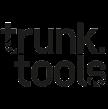



















































































Provider of an end to-endplatformthat empowersresidentialrealestateagentsto deliverexceptionalservicetoclients.

Operatorofarealestateplatformdesignedto helpinbuyingandsellinghomes .

Operatorofanonlinepropertylisting marketplaceintendedforsaleandrent.

Developerofastreamlinedhomerenovation platformintendedtoplan,design,andbuild homes.

Developerofadirectchanneltechnology designedtomakeitconvenientforvacation rentalmarketing.
$2.1bn raised to date

$232m raised to date

$89m raised to date

$105m raised to date

$49m raised to date


